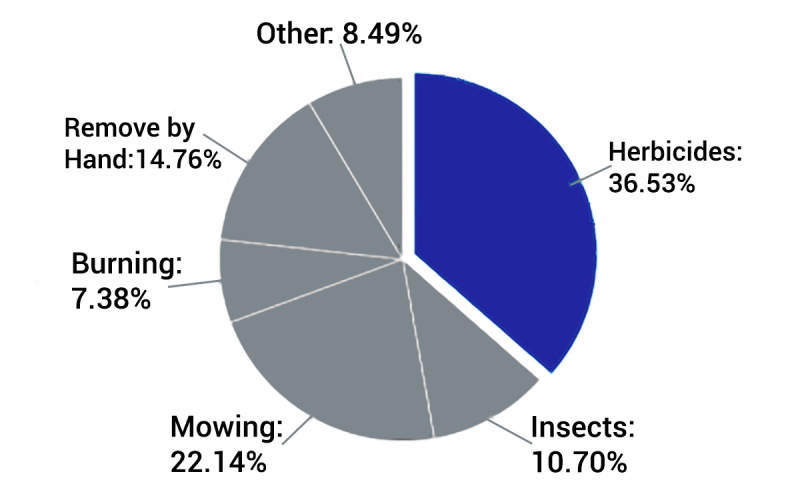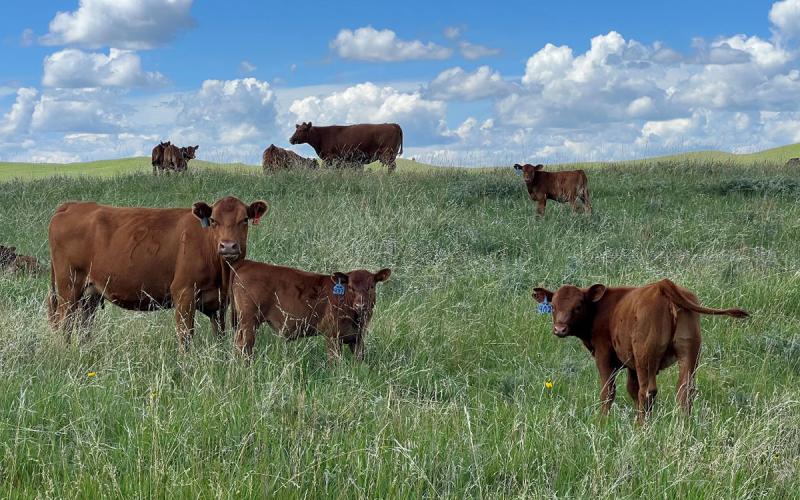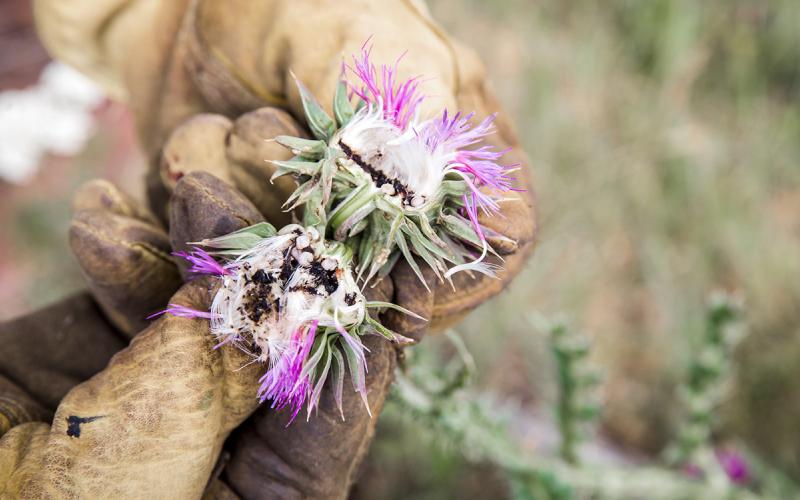
Written collaboratively by Eric Jones, Philip Rozeboom, Jill Alms, and David Vos.
The 2024 season was wet and mild in the beginning and a lot of absinth wormwood, Canada thistle and leafy spurge was abundant across the state. The end of the season was warm and dry, which extended the opportunity to utilize fall herbicide applications. Since most of South Dakota has experienced several frosts, the opportunities for fall herbicide applications are likely over. Now is the time to plan for noxious weed management for both spring and fall tactics. Consider asking yourself the following questions before creating your management plan for 2025.
Questions to Consider
How was my weed management plan this year?
If weed management this year was poor, the plan should change for next season. If weed management this year was excellent, the plan should still change for next season. Overreliance on the same weed management plan that provides excellent control will eventually select for weeds that can survive the tactics. However, if weed management was poor, consider implementing tactics that were not included this year. A fall herbicide application, spring + fall application, or implementing non-herbicide tactics are things that may have been left out of the plan in 2024 but should be included in the 2025 season. Another obstacle for effective noxious weed management is improper herbicide selection. While Milestone (aminopyrachlor) is effective on absinth wormwood and Canada thistle, this product is not effective on leafy spurge. Since weed species usually co-exist in an area, herbicide tank mixtures will likely be needed to increase the spectrum of control. Refer to the latest SDSU Extension Weed Control: Noxious Weeds and Weed Control: Pasture and Range publications for complete listings of herbicides and effectiveness on select weed species.
Where were the weedy areas?
Recording where the weedy areas are located helps know which areas will likely need to receive the most intensive weed management plan. These areas will also likely need to be scouted regularly to ensure control tactics are being executed in a timely manner. If the areas are mapped, spot spraying is a viable option too instead of broadcast spraying areas that did not have weeds. Noting the land features and topography of the infested areas is of importance too. Hilly areas may need to be treated with a sprayer on a four-wheeler or an aerial application. Hilly areas and areas near water bodies are also good candidates for biocontrol releases if the insects will feed on the weed species present. Scouting areas that have after being treated in the spring of 2025 is encouraged to determine if other tactics will need to be implemented.
What weed species were present?
As stated above, knowing what weed species were present will help with purchasing the correct herbicide. Additionally, knowing what species are present can help in selecting the most-effective herbicide application timing. For example, Milestone is effective on absinth wormwood, but if the herbicide is applied when the leaves become white, then effectiveness decreases significantly. Often, if there are different weed species present in an area, the appropriate timing for each species may differ. Weed management should be treated on an area-to-area basis, to ensure all weed species, land topography, and other special features are taken into consideration to ensure the correct tactics and implementation methods are selected.
Can non-herbicide weed management easily be implemented?

Many South Dakota land managers utilize multiple tactics to manage noxious weeds, as revealed by a recently conducted survey (Figure 1). While herbicides are the most-effective weed management tools, implementing non-herbicide weed control tactics can provide additional control. Easily implemented tactics include mowing; releasing appropriate insects for biocontrol; and hand weeding small, isolated patches. While utilizing multiple tactics is preferred to increase weed management, these tactics need to be used together correctly. If mowing and herbicide applications are to be used together, do not mow immediately after herbicide application, as the herbicide does not have time to translocate throughout the plant. Another example could be mowing and releasing insects; if mowing occurs before the release of insects, the insects will likely leave the areas, as there are no weeds to feed on. Be sure to implement each tactic at the correct timing and combination to ensure that each tactic will be effective and not counterproductive.
While it is impossible to predict the growing conditions for 2025 now, proper planning now can ensure that there is a plan for all possible conditions. Planning now can help with decision making with a clear mind instead of trying to come up with solutions with a clouded mind during the busy time of the growing season. While making new changes can be worrisome, try implementing new management tactics on smaller infested areas to determine if the change is a success or an unfortunate failure. Again, remember that weeds adapt to the same management tactics that are applied year after year.

